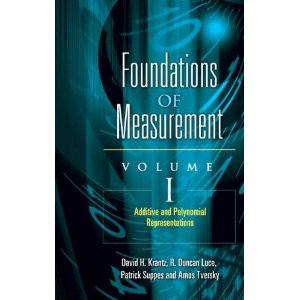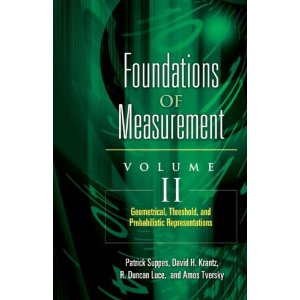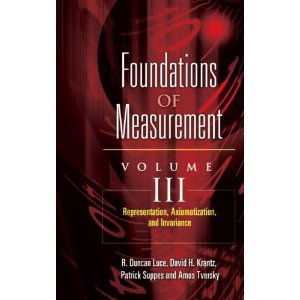







Hand, David J. 2004. Measurement Theory and Practice: The World Through Quantification. London: Arnold Publishers.
Informal, easy-to-read, broad-ranging discussion of measurement.
Michell, Joel 1999. Measurement in Psychology: Critical History of a Methodological Concept. Cambridge: CUP
Narens, Louis 2002. Theories
of Meaningfulness. Mahwah, NJ: Laurence Erlbaum Associates.
Further mathematical treatment of measurement-theoretic issuses, emphasizing the topics toward the end of Volume 3.